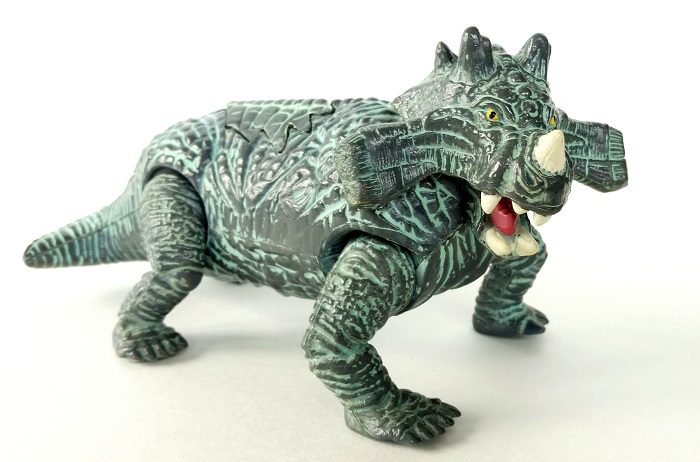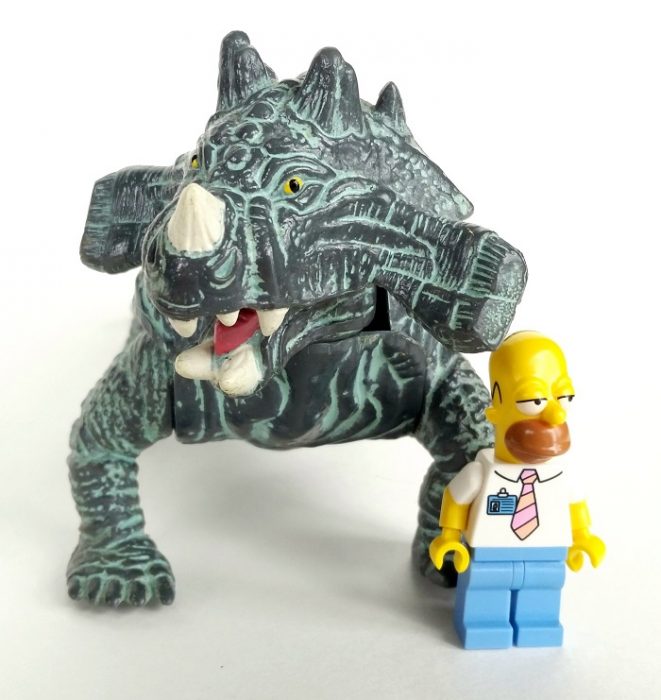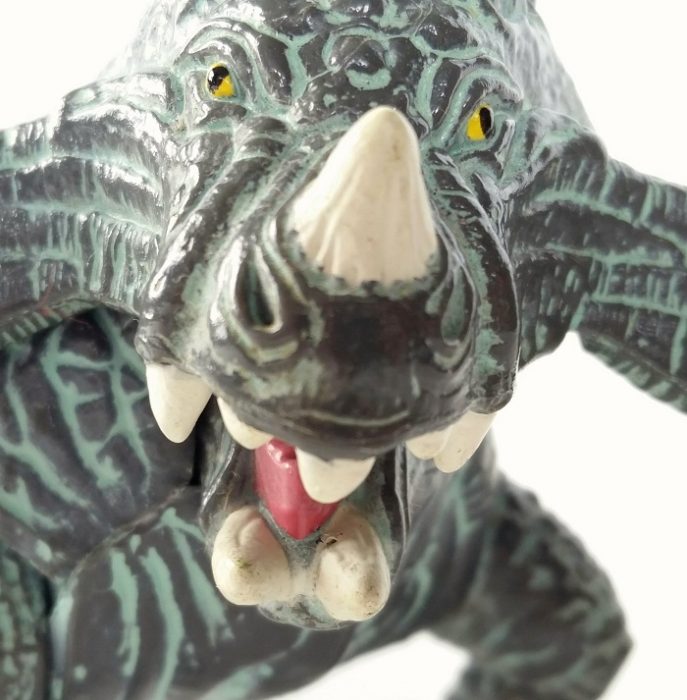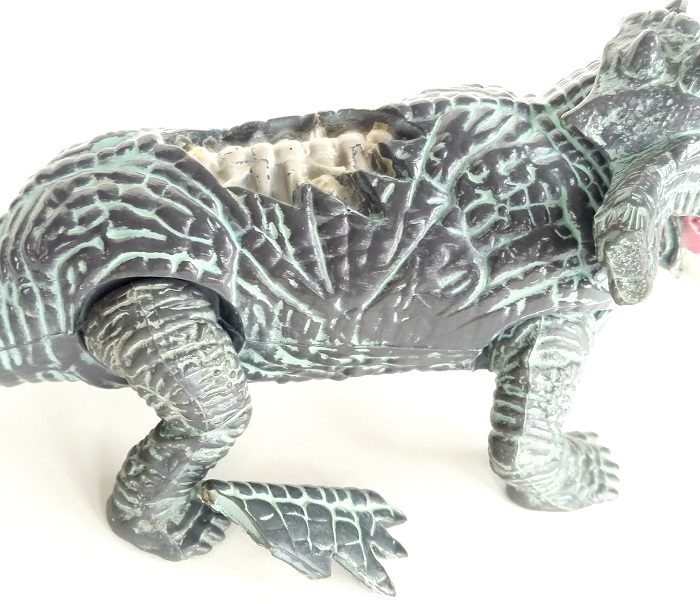Review and photos by Tim Sosa
Kenner’s Jurassic Park line was supposed to have had an additional wave of figures, but they were never released at retail. Fortunately, the 1997 Lost World line re-used some of those prototypes, one of which was this Estemmenosuchus. It was never released as a stand-alone figure, instead being included in a playset with a Scutosaurus, a human figure, and lots of accessories. Today we’ll just deal with the Estemmenosuchus figure.

Estemmenosuchus lived in the Middle Permian, about 30 million years before the first appearance of dinosaurs, and about 200 million years before the mass extinction that decimated them. Estemmenosuchus belongs to a group called the therapsids, from which all mammals descended, including us. It is thought to have been an herbivore, and perhaps semi-aquatic, based on its teeth and overall proportions, which are somewhat reminiscent of a hippo.

This is a big figure: about 20 cm long, or roughly 1:15 scale. It does a reasonable job of giving the general impression of an Estemmenosuchus, but it’s such a distinctive animal that it would be hard-pressed not to. In particular, the huge flattened protrusions just under the eye don’t resemble much else. The other facial ornaments are in roughly the correct positions, but don’t look very much like the known skulls of the animal. The ornaments over the eyes were more elaborate in the real thing, and the nose horn probably didn’t look quite so rhino-like. The overall gray paint job also contributes to a very rhino-like appearance. The muzzle is a bit too short on the toy, and the body is a bit too long. Finally, the toy has a single medial incisor (front tooth), which no therapsid normally has, although there are occasionally people born with this condition.

One Estemmenosuchus specimen has been found preserved with a little bit of skin from the head, and in 1967 the skin was described in a short paper in a Soviet geology journal. I managed to find the English translation (email me if you want a copy), which describes the skin as “dissected by small secondary cracks,” but the author suggests that it was probably smooth skin that shrank and split during preservation. The toy version has what looks like scales on parts of the head and along the spine, which is improbable given what little is known of the animal’s skin, combined with the fact that it’s fairly closely related to mammals. All the same, this paper was hard enough to find in 2016; in 1997 I think giving it scales was a forgivable sin.

This figure has a couple of features common to many Jurassic Park toys: a head-swinging action gimmick and a “dino-damage” removable skin piece. The latter is more likely than not to be lost if you buy this used and loose. The action feature still works on mine, so it seems to be pretty durable. It’s a well-made toy, even if it’s not highly realistic. This is Jurassic Park, so Kenner is due some leeway, especially for having tackled such a little known animal. I would recommend it solely on the basis of its uniqueness. This is almost certainly the only toy of this bizarre and fascinating genus ever produced (other toy makers, get on it!). You can still find it on auction sites reasonably often, but expect to shell out plenty for the complete playset still in the package. Loose ones are much cheaper, but in that case expect most of the accessories to be lost.

Support the Dinosaur Toy Blog by making dino-purchases through these links to Ebay and Amazon. Disclaimer: links to Ebay.com and Amazon.com on the The Dinosaur Toy Blog are often affiliate links, when you make purchases through these links we may make a commission

Mine was made in 1994, not 97.
Based on the stamp on the figure? I think the mold was produced as a prototype for a never-realized 1994 addition to the original Jurassic Park line, and then the mold was finally used for a 1997 line to promote The Lost World.
Dang. This is one of my favorite prehistoric animals but the paint job and texturing is so insanely busy that you lose the ornaments on the head in the mishmash
[…] might be as outdated as a scaly Velociraptor, because studies done on the skin impressions of Estemmenosuchus have shown that synapsids like Dimetrodon may have been covered in bare skin similar to that of an […]
Always wanted this toy back in the day. And the Scutosaurus.
Same! And the Lycaenops. It’s a shame there aren’t more stem mammal toys out there.